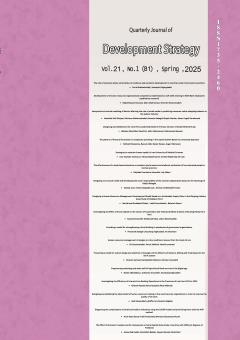Providing a model for strengthening critical thinking in employees of government organizations
Subject Areas : آموزشی
parvaneh sadeghi
1
,
Houshang Taghizadeh
2
![]() ,
ali ghorbani
3
,
ali ghorbani
3
1 - PhD student in Public Human Resources Management, Tabriz Azad University
2 - Department of Management, Tabriz Branch, Islamic Azad University, Tabriz, Iran
3 - Assistant Professor, Department of Business Management, Payame Noor University, Tehran, Iran
Keywords: Thinking, critical thinking of employees, foundation data method, government organizations. ,
Abstract :
Critical thinking, as a fundamental skill in today's complex and changing world, plays an important role in improving decision-making and problem-solving in organizations. This study examines and presents a model for strengthening critical thinking in employees of government organizations. The present study was conducted with the aim of presenting a model for strengthening critical thinking in government organization employees. The present research method was mixed (qualitative and quantitative). In this study, the grounded data method was used. The present study is an applied-developmental study in terms of its purpose, which was conducted in the qualitative stage using the purposive sampling method and using academic managers and experts, senior and middle managers of government organizations, who had complete information about critical thinking. The data of the qualitative part were obtained using semi-structured interviews. In the present study, the most important method of data collection was the use of interviews (semi-structured). Since the most important method of data collection was interviews. In this study, according to the criteria provided by "Cresswell and Miller" in order to ensure the validity of the research, a three-stage process of open, axial and selective coding was used in accordance with the grounded data theorizing process using MAXQDA software. In general, from the analysis of the qualitative research data, 20 main categories and 164 initial codes were identified and presented. According to the results, causal conditions (socialization, leadership, systems thinking, employee competence), contextual conditions (organizational climate, organizational culture), central category (organizational characteristics, leadership), strategies (formulation of requirements, preservation and maintenance of human resources), consequences (organizational productivity and excellence, creativity and innovation, foresight), and intervening conditions (environmental conditions, attitude) were identified as explanations for strengthening critical thinking in employees of government organizations. Finally, this research emphasizes the importance of paying attention to critical thinking as a key tool in improving decision-making and problem-solving processes in organizations and can be a suitable basis for future research in this area.
